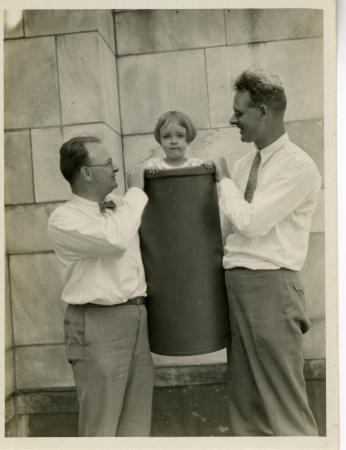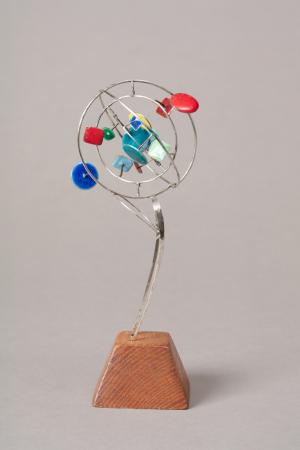Vicarious research is one of the great joys of the reference desk at the Smithsonian Institution Archives. During our pandemic closure, we’ve missed catching those tantalizing glimpses of our patrons’ research inside the fishbowl walls of the reading room.
But research in the Archives collections is by no means on hold. Here are some of the subjects that have recently passed through the reference team’s inbox:
- Carbon dating samples from collections of Olga Linares de Sapir
- Gharials from Nepal
- The biblical antiquities section of the 1895 Cotton States International Exposition, Atlanta, Georgia
- Boomerang and airship technology
- Portraitist Savely Sorine’s 1923 exhibition in the National Gallery of Art
- The Smithsonian Institution Libraries Translation Publishing Program
Subjects of Smithsonian Archives images to be featured in upcoming publications include:
- An 1890 map of the Rio Grande River for a journal article published by El Paso Historical Society
- Portrait of Henri Becquerel for display in the information center of the Fund for Financing the Decommissioning of the Krško Nuclear Power Plant
- The American Costume Committee assembling the First Ladies Hall in 1915 for the upcoming book Histories of Exhibition Design in the Museum: Makers, Process and Practice
- Dore Strauch Koerwin and Friedrich Karl Ritter on the Velero for the upcoming meteorological journal article “La Niña Came to Eden”
- A 1967 group photo of the members of the Anacostia Historical Society for the Anacostia Community Museum’s website
- Lots! Of! Science! Service! Images! for a one-hundredth anniversary feature on Science News

Infrequently Asked Questions (IAQs)
While the “hot topics” of archival research seem to always get top billing, the reference team is glad to share another installment of questions infrequently asked by the Archives’ patrons—plus some answers.
Why did former Secretary Alexander Wetmore refuse to sign his friend’s petition to the International Commission on Zoological Nomenclature?
In 1963, ornithologist James Chapin authored a petition to officially change the name of the Tauraco genus of birds to Turacus. “Ever since the name Tauraco (a misprint for Touraco) was dug up after 144 years...I have hated the look of it,” lamented Dr. Chapin lamented in his letter to Wetmore.
Unfortunately for Dr. Chapin, Secretary Wetmore had “no sympathy whatever” for the change. As he explained to his friend, original publication date should be the deciding factor for generic names — not an ornithologist’s personal “feeling of irritation.”
How many hairpins were featured in the 1980 Cooper Hewitt exhibition Hair?
Edie Rickey, a longtime patron of the Cooper Hewitt, also happened to be a collector of hairpins. In advance of the Hair exhibit, shown in the summer of 1980, she lent the museum 29 items from her collection: pins from Bali, central Africa, Greece, China, and the United States, including four that had been made by Edie’s husband, sculptor George Rickey.

What happens when you stay awake for 60 hours? And also it’s 1925?
According to George Washington University student Alice Haines, you never feel “more normal in [your] life.” (But if you try to drive at night, “you’d better watch yourself.”) Alice Haines was one of eight college students who participated in a sleeplessness study conducted at the university in 1925. Covered in great detail by the Science Service, the study even made its way into the New York Times, the Chicago Tribune, and the Washington Post.
Related Resources
- "Hot Topix in Archival Research, Winter 2022" by Deborah Shapiro, The Bigger Picture, Smithsonian Institution Archives
- "Hot Topix in Archival Research, Fall 2021" by Deborah Shapiro, The Bigger Picture, Smithsonian Institution Archives
Produced by the Smithsonian Institution Archives. For copyright questions, please see the Terms of Use.

Leave a Comment